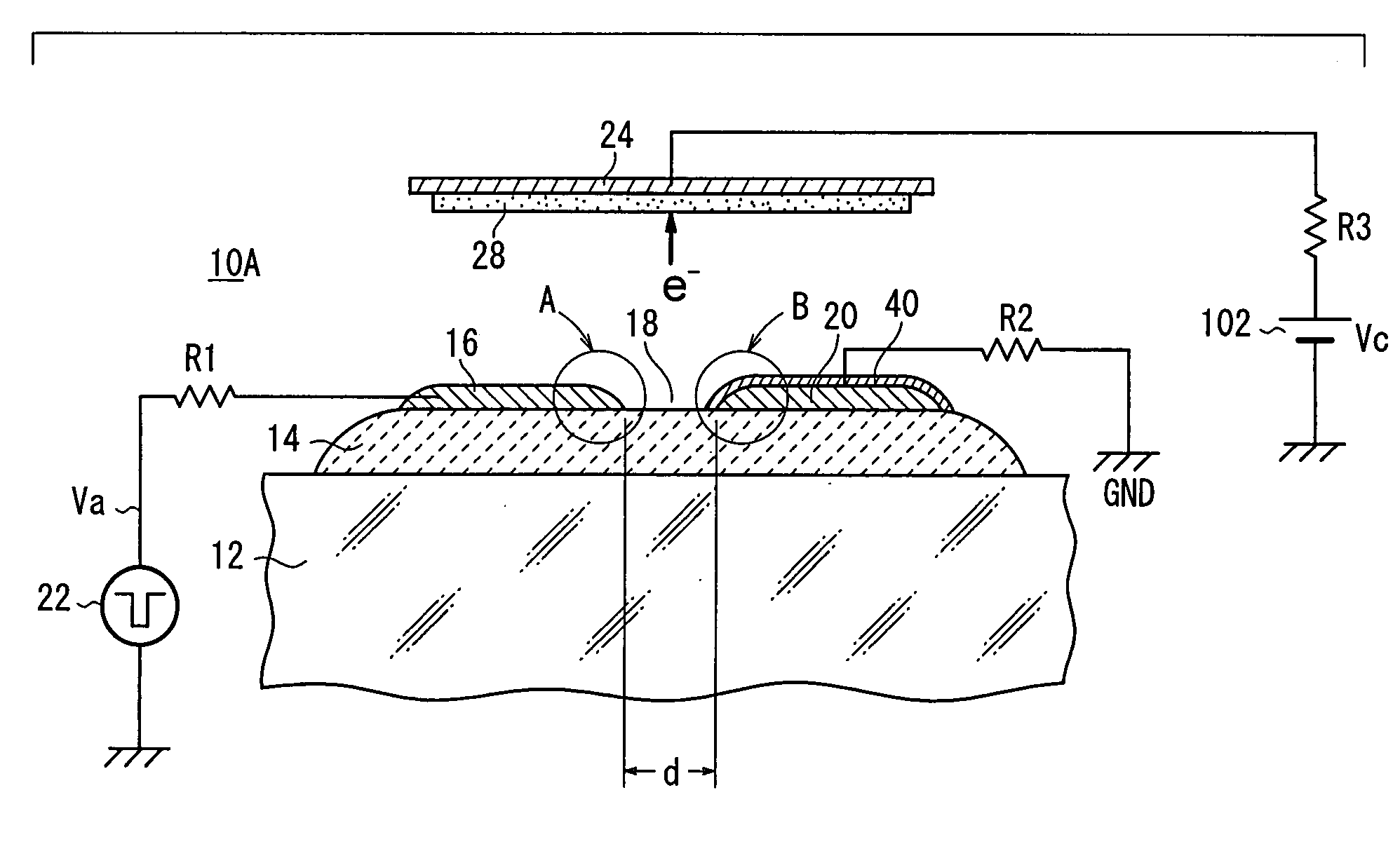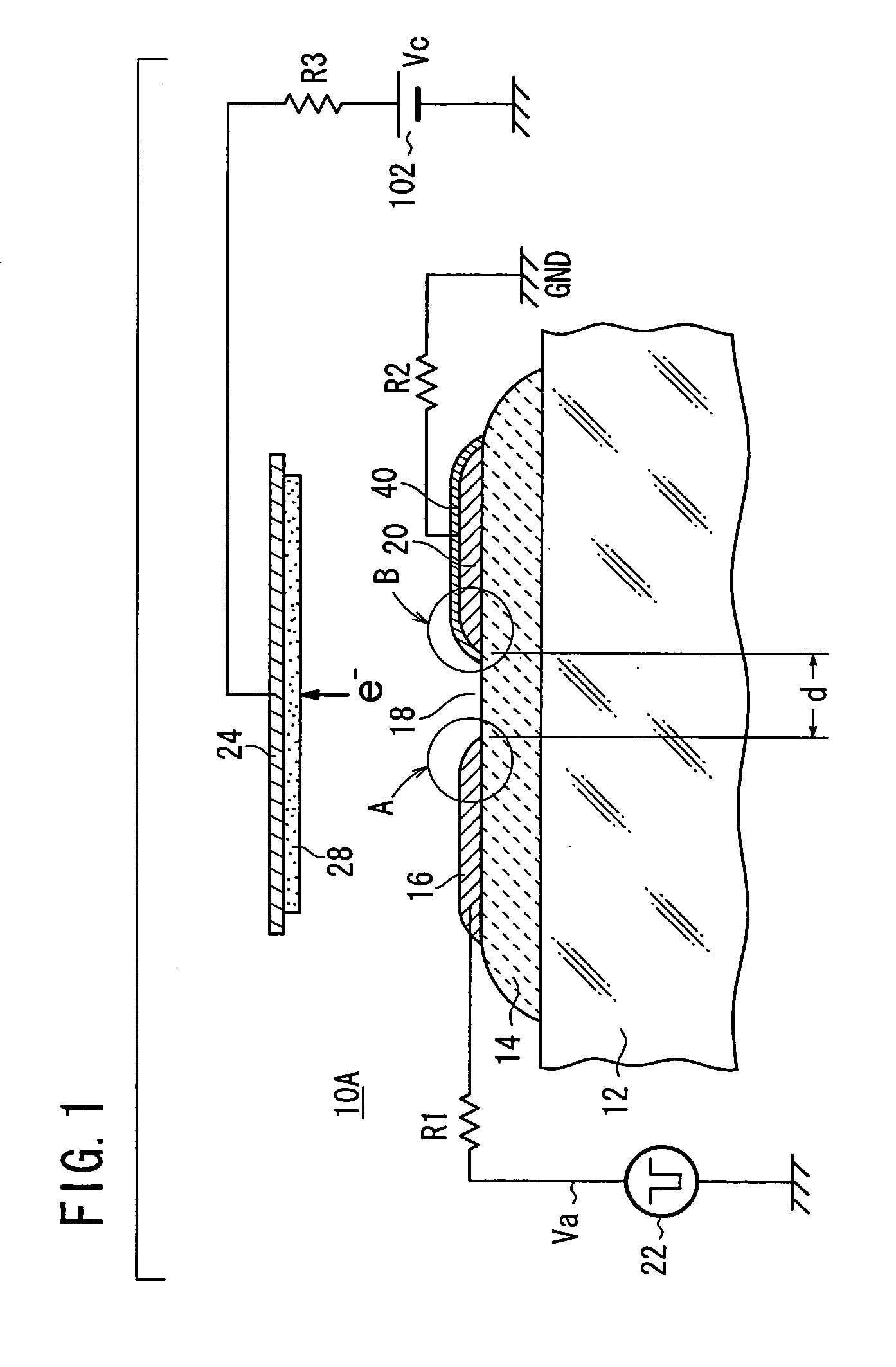Electron emitter comprising emitter section made of dielectric material
a dielectric material and emitter technology, applied in the field of electro-emitters, can solve the problems of merely tens of thousands of electrons emitted, complex panel fabrication process, high panel fabrication cost, etc., and achieve the effects of long service life, high reliability, and not easily damaged
- Summary
- Abstract
- Description
- Claims
- Application Information
AI Technical Summary
Benefits of technology
Problems solved by technology
Method used
Image
Examples
first embodiment
[0059]As shown in FIG. 1, an electron emitter 10A comprises an emitter section 14 formed on a substrate 12, a first electrode (cathode electrode) 16 and a second electrode (anode electrode) 20 formed on one surface of the emitter section 14. A slit 18 is formed between the cathode electrode 16 and the anode electrode 20. A pulse generation source 22 applies a drive voltage Va between the cathode electrode 16 and the anode electrode 20 through a resistor R1. In FIG. 1, the anode electrode 20 is connected to GND (ground) and hence set to a zero potential. However, the anode electrode 20 may be set to a potential other than the zero potential.
[0060]For using the electron emitter 10A as a pixel of a display, a third electrode (collector electrode) 24 is provided above the emitter section 14 at a position facing the slit 18, and the collector electrode 24 is coated with a fluorescent layer 28. A bias voltage source 102 (having a bias voltage Vc) is connected to the collector electrode 2...
second embodiment
[0122]Next, an electron emitter 10B will be described with reference to FIG. 11.
[0123]As shown in FIG. 11, the electron emitter 10B according to the second embodiment includes an emitter section 14 having a width d in the range of 0.1 to 50 μm. A cathode electrode 16 is formed on one side of the emitter section 14, and an anode electrode 20 is formed on the other side of the emitter section 14. The emitter section 14 is formed in a slit 18 between the cathode electrode 16 and the anode electrode 20, and the emitter section 14 is sandwiched between the cathode electrode 16 and the anode electrode 20.
[0124]As with the first embodiment, a charging film 40 is formed on the surface of the anode electrode 20. As shown in FIG. 11, a protective film 42 may be formed on the cathode electrode 16.
[0125]In the electron emitter 10B according to the second embodiment, as with the electron emitter 10A according to the first embodiment, damage to the cathode electrode 16 is prevented. Since the em...
PUM
 Login to View More
Login to View More Abstract
Description
Claims
Application Information
 Login to View More
Login to View More - R&D
- Intellectual Property
- Life Sciences
- Materials
- Tech Scout
- Unparalleled Data Quality
- Higher Quality Content
- 60% Fewer Hallucinations
Browse by: Latest US Patents, China's latest patents, Technical Efficacy Thesaurus, Application Domain, Technology Topic, Popular Technical Reports.
© 2025 PatSnap. All rights reserved.Legal|Privacy policy|Modern Slavery Act Transparency Statement|Sitemap|About US| Contact US: help@patsnap.com



